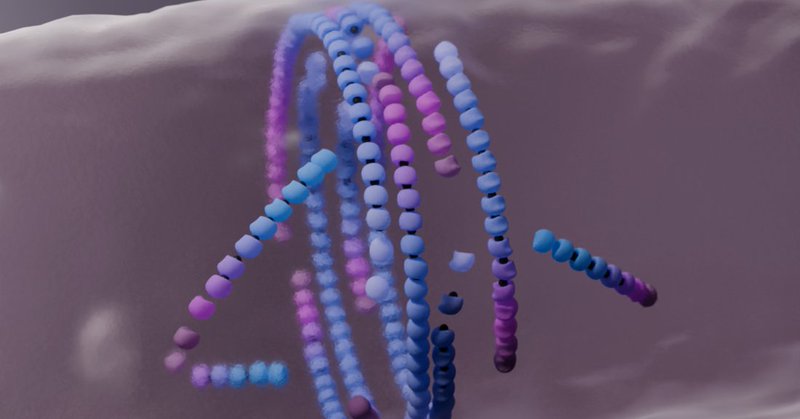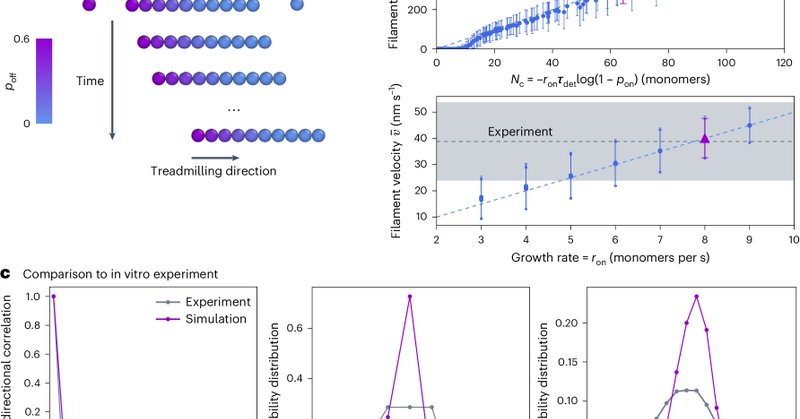
Christian Vanhille Campos
@vainhilla96
Followers
214
Following
489
Media
18
Statuses
104
PhD @SaricLab (@ISTAustria - @UCL) • Music, coffee, movies and ice cream • he/him • 🐘: @[email protected]
Vienna, Austria
Joined October 2015
Did you know cell filaments love to treadmill? 🔄 They grow and shrink on opposite ends and burn energy doing it! But why? How does it drive self-organisation and bacterial division? Dive into our new publication ft. @SaricLab @nartimsoole @seamus_holden labs to find out! 🧫🔬🖥️
4
25
95
EMBL Heidelberg researchers found how chromosomes switch from repelling each other to becoming sticky during cell division. They saw that protein Ki-67 turn chromosomes’ surface into a liquid-like glue that helps in the formation of daughter nuclei. 🔛 https://t.co/IlwwRqHaRK
1
22
71
Treadmilling of cytoskeletal filaments is crucial for their functional self-organization. A study published in @NaturePhysics sheds light on the mechanism underpinning this collective organization. https://t.co/7ABvmW4Wmj
0
1
13
Researchers at @ISTAustria have discovered a previously unknown mechanism of active matter #SelfOrganization, crucial for bacterial #CellDivision: Misaligned filaments spontaneously "die" to create a well-organized ring structure at the center of a dividing cell.
1
4
37
Curious about the #BehindThePaper insights? 🫖🔥 Peek into the story behind the research here 👀👇 https://t.co/aHQ8T8vFPg
communities.springernature.com
Many cellular processes, like bacterial division, rely on the functional self-assembly of mortal filaments. But how does this work? We show that filaments that grow and shrink can spontaneously order...
Did you know cell filaments love to treadmill? 🔄 They grow and shrink on opposite ends and burn energy doing it! But why? How does it drive self-organisation and bacterial division? Dive into our new publication ft. @SaricLab @nartimsoole @seamus_holden labs to find out! 🧫🔬🖥️
0
1
9
I’m so proud of how far we’ve come with this project, thanks to the joint efforts of @ISTAustria, @UCL_IPLS, @uniofwarwick, and @CBCB_Newcastle! 💪 A big thank you to @KevinDWhitley, @radler_philipp, @nartimsoole, @seamus_holden, and @SaricLab for all the fun along the way! 😊
1
0
6
Takeaway: Filament mortality via treadmilling drives self-organisation into large-scale dynamic robust and responsive structures. This allows FtsZ to form Z-rings at the right place and time in bacteria, triggering cell division. 💍🔄🎯
1
0
6
What about division? Our model naturally produces rings under in vivo conditions, providing a quantitative explanation for B. subtilis division ring formation and its dynamics, which is vital for proper division! 🔄💍 @SaricLab 🖥️🤝🔬@seamus_holden
1
0
5
But how? Turns out, treadmilling takes no prisoners! ⚔️😱 Misaligned filaments that get stuck against their neighbours can’t grow but continue to shrink and eventually die ❌🟰💀 Only the aligned survive! 🧭➡️🌟
1
0
5
We’ve developed a simple coarse-grained model that captures the growth-shrinkage magic of these filaments ✨ and guess what… just like bacterial FtsZ in the lab, our model filaments align perfectly! 📏🔗 @SaricLab 🖥️🤝🔬@nartimsoole
1
1
8
I am thrilled to share the release of the Organelle Dynamics and Function Lab @ntusbs @NTUsg Super thankful to @maxgabgut, my great lab mates, amigos and mentors @Crick and everywhere 🇦🇷➡️🇬🇧➡️🇸🇬 Interested candidates get in touch, recruiting soon! https://t.co/U2JcPHYOWw
#newPI😬
bussilab.com
The Organelle Dynamics and Function Lab studies the interplay between membrane-less and membrane-bound organelle interactions during neurodegeneration.
25
10
152
2 beautiful days of our group retreat in the Alps. We hiked, we enjoyed silence ❄️, we enjoyed science, we cooked, we planned, we played, we 🛁 at 🌡️.
1
4
54
Belated and deserved celebration of @claudiobussi paper @TheCrick with cheese tower and bubbles 🫧@DimovaLab @agumangia @SaricLab @vainhilla96 note the mozzarella representing a damaged lysosome 😃🎉congratulations everyone 🥳
6
2
85
Healing a perforated vesicle: Molecular condensates rapidly form, triggered by the mixing of the inner (blue) and outer (pink) protein & ion solutions. Over time, the droplets form a plug that stabilizes the membrane. Simulation: © Christian Vanhille Campos @vainhilla96 @SaricLab
0
5
24
Membrane damage & stress response: How does a damaged lysosome heal inside the cell? A new paper in collaboration with @SaricLab & @vainhilla96 at ISTA shows that stress granules form a plug to seal the pore. @TheCrick, @Nature
Cells produce ‘stress granules’ when their membranes are damaged, but the purpose of these granules has been unclear. Researchers have shown that the granules actually patch up holes in the membranes to help keep infections under control 🩹 https://t.co/pnj6ppvtXe
1
2
14
Thank you very much to @alexholehouse and Stephen Plassmeyer for covering our recent work on stress granules and endomembrane damage in this excellent News and Views article in @Nature. Check it out:
0
13
62
#Condensates as plugs for damaged #membranes? 😯Check out this cool work lead by @maxgabgut @claudiobussi, featuring in vivo, in vitro by @DimovaLab @agumangia, and in silico by our @vainhilla96. Fun collab after a random London encounter @UCL_IPLS. 🎡@TheCrick @ISTAustria
How can lysosomes, when ruptured, maintain stability allowing for repair? Glad to share @Nature
https://t.co/oFysi2d1kv the function of stress granules (SG) as molecular plugs that stabilise damaged membranes @TheCrick @maxgabgut #condensates #lysosomes #TB👇Thread
3
10
56
Thrilled to see this out! Fantastic work driven by @claudiobussi in collaboration with @agumangia @DimovaLab @vainhilla96 @SaricLab We discovered a function for stress granules during membrane damage. Very relevant for #tuberculosis =ZNFX1 Thanks everyone and @ERC_Research 🙏
How can lysosomes, when ruptured, maintain stability allowing for repair? Glad to share @Nature
https://t.co/oFysi2d1kv the function of stress granules (SG) as molecular plugs that stabilise damaged membranes @TheCrick @maxgabgut #condensates #lysosomes #TB👇Thread
26
39
217











